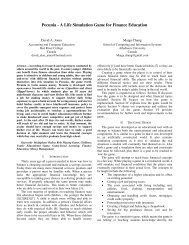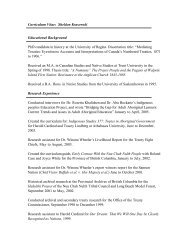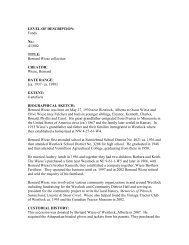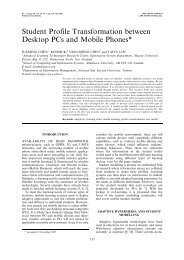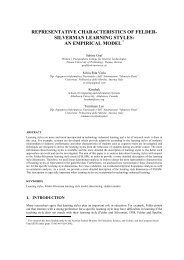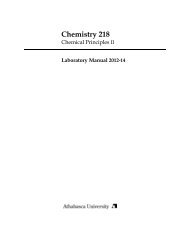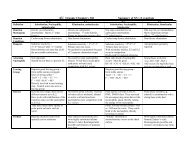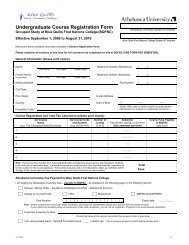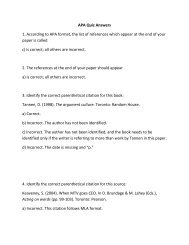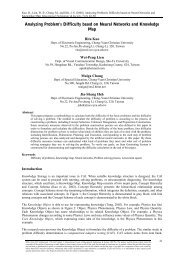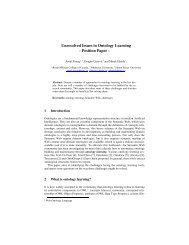You also want an ePaper? Increase the reach of your titles
YUMPU automatically turns print PDFs into web optimized ePapers that Google loves.
CHEM<strong>360</strong> Report Book 2012-14Exp.16CHEM<strong>360</strong> Experiment 16 ReportStudent Name:___________________Date:___________ID Number:___________Experiment 16 Prelab QuestionsLab Safety1. A procedureal flowchart is highly recommended for performing this experiment.a) trueb) false2. No source of flame is allowed in this experiment because of the use of diethyl ether.a) trueb) falseEquipment Preparation3. Dry glassware is essential for the Grignard reaction to work because:a) the Grignard reaction is easily contaminated with waterb) the Grignard reagent is very moisture sensitivec) the Grignard reagent is very stableReagent Preparation4. What is the purpose of the magnesium and diethyl ether used in the Grignard Reaction?a) magnesium reacts with bromobenzene to form the alcohol product, triphenylmethanol, anddiethyl ether is the solvent which keeps the product in solutionb) magnesium reacts with ethyl benzoate to form the Grignard reagent, and diethyl ether is thesolvent for the reaction, which also helps to stabilize the Grignard reagentc) magnesium reacts with bromobenzene to form the Grignard reagent, and diethyl ether is thesolvent for the reaction, which also helps to stabilize the Grignard reagentReaction5. Which of the following are the limitations of the Grignard Reaction?a) the Grignard reagent is only useful in preparing tertiary alcohols, and it is moisture sensitiveb) the Grignard reagent can only be formed from certain organohalides, and it is moisture, andoxygen sensitivec) the Grignard reagent can only be formed from certain organohalides, and it is oxygen sensitiveReaction Workup6. What is the purpose of using 50mL 2M H 2 SO 4 in Part C Step 1?a) To dilute and lower the pH of the mixture and thereby prevent product precipitationb) To protonate the alcohol moiety of the final productc) To prevent the decomposition of the Grignard reagent7. What layer will your product be in after addition of the diethyl ether in Part C Step 3?a) the aqueous layerb) the ether layer61



